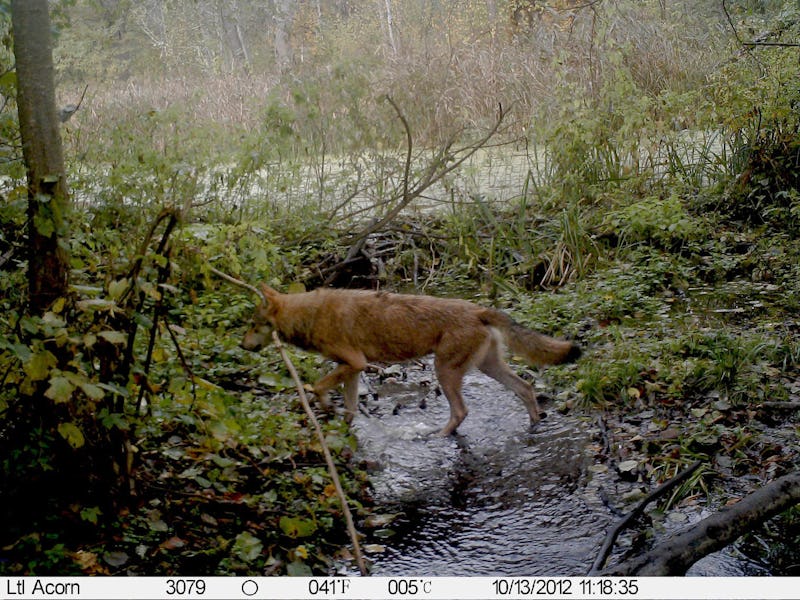Animals at Chernobyl are Thriving -- Because Humans Aren't There
The wildlife population grows in the disaster zone.

Almost 30 years after the Chernobyl nuclear disaster, wild animals are surviving in the Belarusian exclusion zone, according to a paper published in Current Biology.
Researchers found that three of their hypotheses were proved wrong by what they found in the Chernobyl Exclusion Zone.
Wrong Hypothesis 1: “Mammal abundances are negatively correlated with levels of radioactive contamination at Chernobyl.”
Wrong Hypothesis 2: “Densities of large mammals are suppressed at PSRER (Chernobyl zone) compared with those in four uncontaminated nature reserves in Belarus.”
Wrong Hypothesis 3: “Densities of large mammals declined in the period between [one] and 10 years after the accident.”
To gather their data, the researchers examined animal tracks in the snow as an analog for wildlife’s presence. They also revisited “aerial survey counts” (literally counting animals from above) taken by the Soviet Union in the ten years following the accidents. For comparison, they looked at nearby uncontaminated nature reserves to gauge how animal populations should be behaving and thriving.
Animal abundances in the Chernobyl exclusion zone.
Although their empirical evidence didn’t support their hypotheses, that inability doesn’t prove that animals can survive at Chernobyl. What it does show, though, is that the lingering radiation may not prevent wildlife’s existence as much as we once thought.
The confounding factor of the investigation is that humans haven’t lived in the Chernobyl zone since the disaster. Prior to 1986, the Soviet wildlife population was declining, which likely occurred because of the country’s own socioeconomic decline. The Soviet government had even instituted control over the wolf population, but when the USSR collapsed in 1991, the wolves, among other species, could once again roam free.
Without humans, animals are free to survive without interference. The new research, thus, shows that humans could, in fact, be more detrimental to wildlife survival than decaying radiation. It’s not likely for humans to return to Chernobyl anytime soon, so there’s further opportunity for continued animal growth and acclimation to the environment.
An abandoned dog is seen within the exclusion zone, about 6 kilometers away from Fukushima Nuclear Power Plant, on April 12, 2011 in Futaba Town.
Radiation poisoning is not good for any living species, but the new research continues to show that it might not be as life-threatening as once thought. Recently, scientists determined that panic killed more people than radiation at 2011’s Fukushima disaster.
According to the BBC, new camera technology could be used to track the animals more closely and get a better understanding on the radiation’s effect. Having learned that animals can live at Chernobyl, the next step is learning the specific effects of radiation on them, and the Chernobyl wildlife appear to be healthy and cooperative test subjects.